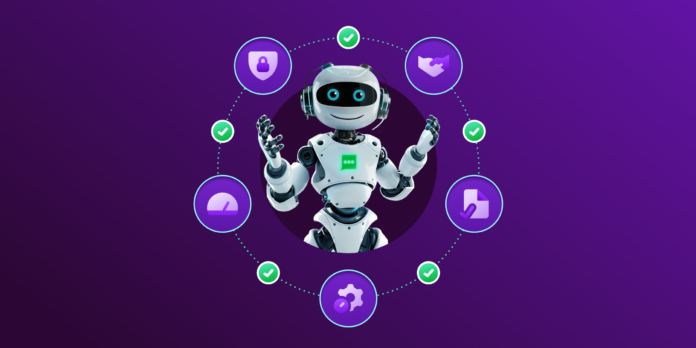Here’s a question for leaders and executives of all financial services companies:
What’s the Cost of Getting Your Banking AI Chatbot Wrong?
Turns out, how you choose to answer that question…is almost a personality test unto itself. Did your mind go first to:
- 💸 Actual dollar cost: If you choose the wrong vendor and have to start over again, that’s going to be double the time and cost (at least).
- 🤬 Customer complaints: Most customers have had poor experiences interacting with bots from other companies, many are already conditioned to dislike virtual assistance.
- ✅ Compliance or regulatory issues: If anything goes wrong, it could be far worse than just customers complaining.
- 📊 Competitive disadvantage vs. your peers: As your company continues to evolve to serving digital-first customers, you can’t keep operating with a phone-first channel-centric strategy.
- 👀 Personal cost to your career and performance: If you don’t get AI right, you know who will? The person who replaces you.
- 😳 Possible prison sentence: OK, maybe that’s a stretch…(you’d probably just get community service).
As you consider the possible risk factors, it’s clear that you have 3 choices when implementing a banking AI chatbot in your organization. You can:
- Remain on the sidelines (but miss out on the proven efficiencies of AI for simpler customer interactions, as well as its ability to assist frontline agents to make their jobs easier)
- Work with an AI vendor that serves customers across a wide variety of industries, whose bots don’t always speak the language of your organization
- Select a partner whose entire AI platform was purpose-built for high trust companies including banks, credit unions and insurance companies
How you answer that question says less about your personality, but it will determine whether your organization gets AI right or wrong in the year ahead.
Let’s be honest. Implementing AI chatbots in banking isn’t a decision you can afford to get wrong. The stakes are too high for ‘good enough’—yet the potential value is too significant to ignore. Here’s the good news: you don’t have to figure this out alone.
The most successful financial institutions have already blazed the trail, establishing 5 must-have standards for AI chatbot success. Think of these five standards as your checklist for choosing the right AI partner—one that will protect your institution while delivering real results.
1. AI Must Be Responsible
This should be the prime directive for any organization–especially in financial services: There should never be any situation in which a bot offers information to any customer that is incorrect, inconsistent or just flat-out made up.
The term “responsible AI” has come to be interpreted based on a wide variety of qualities, but at its most basic level it means this: A company must always have total approval of any answer or information ever presented to a customer (or even an employee). Responses sent to end customers/visitors must go through enterprise class approval processes to limit any potential liability or risk.
2. AI Must Be Compliant
All virtual assistants must have comprehensive monitoring and logging capabilities that support the full range of governance and audit requirements.
Data privacy is also a major compliance requirement and cannot be compromised, so you will also need to be ensured that your data will never be utilized to train foundational model providers.
Plus, customer-facing AI tools must be able to immediately identify questions that are out-of-bounds. [Real example: We know of one company whose bot received the following question: “Which of your branches have the best looking employees?” Uhhhh, you don’t want a bot to get within a mile of that one!]
3. AI Must Be Secure
It’s crucial that all customer interaction data must never leave the partner’s systems, ensuring trusted security, data privacy and continuous reliability. With industry-specific intents, FI-approved content, and built-in real-time data redaction, you can ensure that no rogue data slips through the cracks and AI chatbots accurately represent your organization’s unique products and resources.
Responsible AI implementation requires that protections are built into the infrastructure. It should be encrypted by TLS (transport layer security) for data transfer with triple hot redundancy and high reliability.
4. AI Must Be Simple to Implement
As you weigh your decision, you should ask a lot of questions about how implementation and agent onboarding could cause friction or disruption. If new functionality requires tedious rounds of off-the-floor training, it may or may not be worth the hassle for your organization.
The right banking AI chatbot tools should be purpose-built and be implemented out-of-the-box. Setup and ongoing use should be as effortless as possible with no complex AI training or coding required. Plus, you will need to be certain that all AI tools are being continuously updated and improved without any extra effort (or downtime) on your part.
5. AI Must Be Efficient
While your organization will have to make decisions about whether to deploy AI tools for either customer-facing, rep-facing or both, you will need to be confident that these moves will pay off with increased efficiency and demonstrable ROI.
What we’re seeing is that for most organizations, it’s possible to automate an average of 65% of all interactions–while actually increasing customer satisfaction and NPS scores.
As companies adopt agent AI tools like Interaction Wrap-Up and Transfer Summary, for example, they can expect a 20% increase in agent productivity, which has a massive impact on reducing customer wait times and AHT.
The Bottom Line: Where Customer Experience Meets Risk Management
Your organization gets to choose whether it will live up to these new standards for the responsible use of AI chatbots in banking, or not. To be fair, this is a decision that most companies haven’t had to make (up until now). But in this maturing AI Era, even “no decision” is a decision.
Start by evaluating potential partners against these 5 essential standards. If you do, you’ll achieve two goals, which until now may have seemed at odds with each other:
- To your organization: This will demonstrate the seriousness of your responsibility to eliminate any potential regulatory, compliance or reputational risks associated with AI chatbots.
- To your customers and customer-facing team members: It will demonstrate that you are 100% committed to creating the most efficient and effortless experiences with every interaction, and be seen as a leader in embracing new technology including AI tools that enable “humans to be more human”.
Ready to implement a banking AI chatbot that meets all 5 essential standards? Schedule a demo to see how Glia’s purpose-built solution can transform your customer experience safely and securely.





